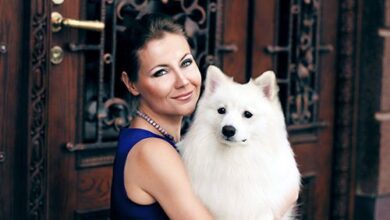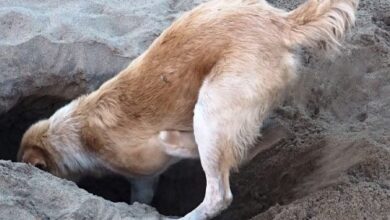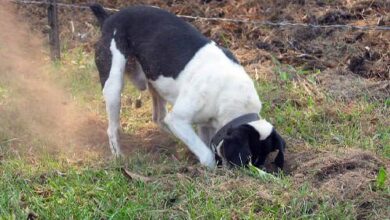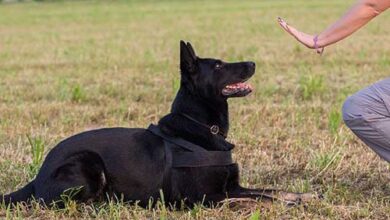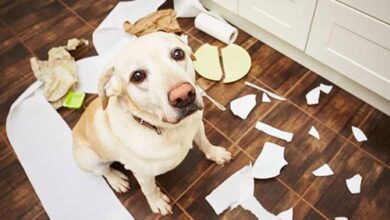How to teach your dog to be left alone?
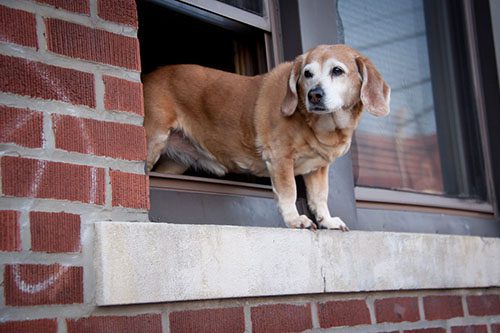

Your dog cries and howls as soon as you leave him alone at home? He peeps behind the bathroom door when you’re there. Your dog follows you everywhere or he can’t stand seeing you in a different room. It even destroys your stuff. It becomes unbearable.
Attachment and detachment
When a puppy is taken from its siblings, it is a real devastation for him. It is even a real trauma, often amplified by this received idea which is to leave your puppy alone from the first night. I would even say that most masters do not imagine how necessary this learning is.
In reality, the puppy will learn nothing except to resign. As with any trauma, this one can change as you grow. This is how a two-month-old puppy resigned to being left alone for the first few days at your home, can start to howl and do damage a few months later. And that’s normal because he will not have learned to be alone.
In a group of dogs, learning to be alone does not happen overnight, but rather very gradually. If we left the choice to the group, the puppies would not be put away or not for several months. This explains why many dogs do not cope well with loneliness. In short, learning to be alone is difficult for the dog, because naturally, he would not stay alone especially not overnight.
Effects on the dog
Indeed, loneliness in dogs is experienced as stress, if it is not taught that precisely this can be pleasant. Stress will manifest itself in different ways, depending on the dog, its history, and its environment. But there are still clues that show you clearly that your dog can not be left alone. In addition, your dog can:
- stress to the point of howling or barking when you leave and even sometimes during your entire absence. The neighbors will quickly complain.
- destroy your objects such as shoes, the remote control of your TV, or the sofa;
- he can relieve himself all over the house and sometimes has diarrhea even though he is usually clean.
- he may try to reassure himself by eating what is within his reach at the risk of poisoning himself or having an intestinal obstruction. Both can be deadly to the dog.
- self-harm by licking wounds. The dog licks itself for no apparent reason, often at the level of the legs, the rump, or the tail.
As in humans, chronic stress is dangerous for health. It should therefore be taken into account as soon as possible. The more you delay learning solitude, the more difficult it will be for the dog and for you.
When to teach him to be alone?
The ideal would be to learn solitude as early as possible. But very often, when the puppy arrives at home, he has never been alone before. Let’s not forget that until now he was always surrounded by his siblings and his mother. He must therefore be able to reassure himself in his new environment and be comfortable there before any learning. It may take a few days. Learning will come once your puppy feels more comfortable in your home.
Some puppies are very happy from day one. Do not be distracted by this attitude. Your puppy may be experiencing stress and not show it. So you have to be patient.
What not to do
When a dog does not know how to stay alone and does damage (destruction of objects, dirtiness, barking, howling), the master is often very angry when he returns home and discovers what the dog has done. Misunderstood, the dog is then punished. This is what absolutely must not be done. Indeed, your dog does not know why he is being punished. His look of “guilty” is just a signal to appease you, because he made the connection between your arrival and the punishment. He may even have made the connection between: there are objects on the floor and the angry master.
Your dog doesn’t see punishment the way you do. He will therefore not only stress about your departure but also about your return. Which will end up sinking him into the mismanagement of his loneliness. It is therefore likely to do more damage.
How to teach him to be alone?
Here are some steps that will help your dog stay alone. These steps can be put in place when he is a puppy, but also when the dog is an adult:
- You have the right to take it with you in the room for the first few nights. Simply, if you do not want him to stay there, you will have to gradually move his basket back towards the exit. You can put a soft toy and a hot water bottle in his basket (so that he has the feeling of a warm body next to him).
- Make his basket more positive by putting treats and toys for him when you move around the house. The goal is that he takes care of his side.
- When you go to get the mail or take out the trash, give him something to do while you go out.
- When you’re away longer, create a nonsense box for him. In a box or a shopping bag, put some kibble or treats, newspapers, and toys that he will only have during your absence. The goal is for your dog to search and have fun looking in this box. If he’s busy, he won’t stress. This box of nonsense must imperatively be picked up when you get home! The principle is that the dog has everything when his master is not there so he is interested in it.
- You can restrict the dog’s space. Restricting space means not allowing him access to all the rooms so that he does not seek your scent everywhere and destroy your belongings.
- Finally essential, you have to satisfy your dog before leaving and make sure he has everything he needs. A dog stimulated daily will be less stressed and will be easier to train.
According to the dogs, this learning will be more or less long. So you have to be patient. You can help your dog by giving him Bach flowers or even by hiring a pet-sitter who would come and take him out during your absences.


